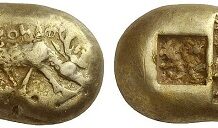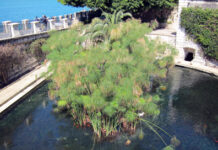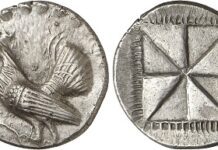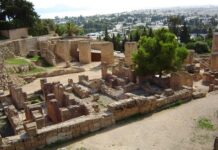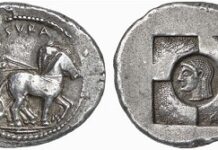Ursula Kampmann
Why a State Mints Coins
Why did states start to mint their own coins? And why does the control of the monetary system belong to the most important governmental tasks? Here you will find an insight how this happened.
Sicilian Mosaic Part 9: The tyrant Dionys to seek
The war between Segesta and Selinunte did not come to an end with the Syracusan victory over Athens. Now, the Carthaginians got involved and the Syracusans made Dionysius their tyrant in order to save their city.
The Mints of San Francisco: Part 2 The New Mint
Gaining access to the San Francisco Mint is not that easy. And it is outright prohibited to take photographs, strictly speaking. We can still provide you with interesting insights: old and new photographs of one of the world’s biggest mints.
Sicilian Mosaic Part 8: Athens intervenes on Sicily
In 466 the tyrant Thrasybulus was expelled from Syracuse, which is how the Syracusans became democratic and soon enough had to defend themselves against Athens – which would have liked to also have influence over Sicily.
Sicilian Mosaic Part 7: The coinage of Himera and Acragas
Do you know the coins from Himera with the crab of Acragas on the reverse? More about the coinage of these two cities and the historical background of this particular reverse motif can be found here.
Sicilian Mosaic Part 6: The Carthaginians attack
The following part centers on the first big battle of the Greeks against the Carthaginians and the victor: Gelon. But his victory didn’t bode well for a lot of inhabitants of Sicily: They were forced to leave their ancestral home.
Sicilian Mosaic Part 5: Syracuse
In 485, Gelon managed to gain control over the city of Syracuse. At that time, the city already looked back at decades of minting coins which featured Arethusa and a horse chariot. Why you will read here.
Sicilian Mosaic Part 4: Gela
In the early 5th century, entire Sicily focused on Gela and its tyrant Gelon. Here you may gain insight into the coinage of this city in this era.
Numismatic miniatures from the North: Part 4 – Treasure Island. Treasures, treasures and even more treasures
More than 700 treasure cases with around 180,000 coins have been discovered on the island of Gotland. The trader-peasants buried the earnings from their adventurous travels in the ground, where they were found by their descendants.
Human faces, part 38: Henry VIII and the second of his six wives
That Henry VIII had an entire collection of wives in his lifetime is not news. But can you remember all of them? In this episode of “Human faces”, we will tell the story of his second wife, Anne Boleyn.



